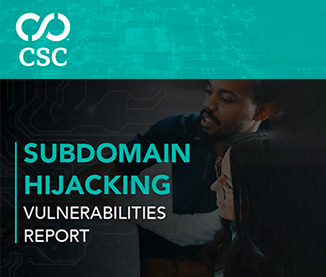

Brand Protection |
Sponsored by |

|



Cybercriminal network Innovative Marketing made headlines in rogue scareware's heyday. Between its founding in Kyiv, Ukraine, in 2009 and the three years it continued operating, the company reportedly amassed close to US$700 million in revenue.
In addition to batch data feeds, real-time APIs, and web-based GUIs, WhoisXML API now delivers domain intelligence through data streaming. With the new delivery model, the company provides the data to users as soon as they are made available and processed at an interval of 1 hour or less.
The U.S. tax season began when the Internal Revenue Service (IRS) started accepting and processing 2021 tax returns on 24 January 2022. The deadline is set for 18 April 2022, and taxpayers expect to receive email notifications regarding penalties, refunds, and other tax-related issues
Distinguishing properties added by the companies themselves is an essential part of this study. If the legitimate company owns the domains and subdomains, they have control over these assets. Otherwise, the digital properties can be considered rogue that can be potentially used in brand abuse, phishing campaigns, and other malicious activities.
It's not unusual for movies, actors, and actresses to serve as lures in cyber attacks. Our recent post on "Spider-Man: No Way Home" proved that. Phishers and other threat actors will, unfortunately, try to capitalize on anything that's bound to get a lot of user attention. And the annual Oscar Awards is no stranger to such a scenario. Just last year, in fact, hackers used nominated films as phishing baits. This year may be no different.
Alban Kwan, CSC's regional director for East Asia, recently moderated a panel discussion entitled "Embracing new tools to enhancing protection" with renowned global brands - Ant Group (parent company of Alipay), Daniel Wellington, and Western Digital at the recent World Trademark Review's Brand Strategy China.
Checkpoint researchers identified DHL as the most-imitated brand in phishing campaigns at the end of 2021. We sought to find if that will remain the case this year by looking at various intelligence sources.
Threat actors have notoriously taken advantage of the Olympic Games's popularity to launch malicious campaigns. The "OlympicDestroyer" malware was most notable, using a domain related to the Pyeongchang 2018 Winter Olympics. But the COVID -- 19 bubble in the 2022 Olympic Winter Games may have increased the danger.
Romance-themed malicious campaigns are launched throughout the year, but days leading up to Valentine’s Day could be particularly timely for such activities.
BlackTech, an APT group known for cyber espionage activities targeting Asia, was recently detected using a new malware called “FlagPro.” NTT Security named some indicators of compromise (IoC) related to the new campaign, including five IP addresses and two subdomains.